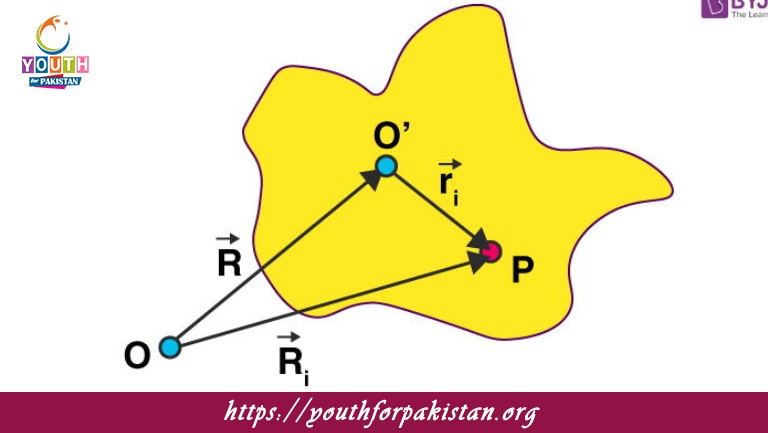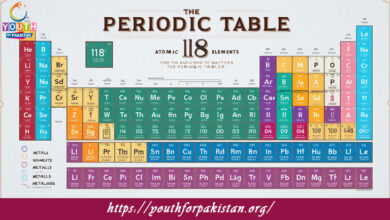Relation Between Linear And Angular Accelerations MDCAT MCQs

Welcome to the Relation Between Linear And Angular Accelerations MDCAT MCQs with Answers. In this post, we have shared Relation Between Linear And Angular Accelerations Multiple Choice Questions and Answers for PMC MDCAT 2024. Each question in MDCAT Physics offers a chance to enhance your knowledge regarding Relation Between Linear And Angular Accelerations MCQs in this MDCAT Online Test.
Relation Between Linear And Angular Accelerations MDCAT MCQs Test Preparations
If the angular acceleration of a rotating object is constant, the linear acceleration at a point on the object is:
a) Constant
b) Increasing
c) Decreasing
d) Zero
For a rotating wheel, if the radius of the wheel is doubled while keeping the angular acceleration constant, the linear acceleration at the edge of the wheel will:
a) Double
b) Quadruple
c) Remain the same
d) Halve
Angular acceleration is the rate of change of:
a) Linear velocity
b) Linear acceleration
c) Angular velocity
d) Angular displacement
In rotational motion, if the radius of the circle increases while the angular acceleration remains constant, what happens to the linear acceleration?
a) It increases
b) It decreases
c) It remains constant
d) It becomes zero
If the angular acceleration of a rotating object is halved, the linear acceleration at a point on the object will:
a) Remain the same
b) Double
c) Quadruple
d) Halve
The unit of angular acceleration is:
a) m/s²
b) rad/s²
c) m/s
d) rad/s
For an object undergoing uniform angular acceleration, the linear acceleration at any point is:
a) Constant
b) Increasing
c) Decreasing
d) Zero
What is the relationship between linear acceleration and angular acceleration for an object in rotational motion?
a) Linear acceleration is the product of angular acceleration and radius
b) Linear acceleration is the sum of angular acceleration and radius
c) Linear acceleration is the difference between angular acceleration and radius
d) Linear acceleration is the quotient of angular acceleration and radius
If the radius of rotation is halved and the linear acceleration is constant, what happens to the angular acceleration?
a) It remains unchanged
b) It doubles
c) It halves
d) It quadruples
The linear acceleration at the edge of a rotating object is directly proportional to:
a) The radius of rotation and angular acceleration
b) The radius of rotation and linear velocity
c) The angular velocity and linear velocity
d) The angular acceleration and linear velocity
If the angular acceleration is increased, the linear acceleration at a point on a rotating object will:
a) Decrease
b) Increase
c) Remain constant
d) Become zero
Angular acceleration is the change in:
a) Angular velocity over time
b) Linear acceleration over time
c) Linear velocity over time
d) Distance over time
If an object’s linear acceleration is increasing, the angular acceleration must be:
a) Decreasing
b) Constant
c) Increasing
d) Zero
In uniform circular motion, the linear acceleration of a point is:
a) Constant
b) Increasing with time
c) Decreasing with time
d) Zero
If an object rotates faster while the radius remains constant, the linear acceleration will:
a) Increase
b) Decrease
c) Remain the same
d) Become zero
In a rotating disk, if the angular acceleration is zero, what happens to the linear acceleration of points on the disk?
a) It becomes zero
b) It increases
c) It decreases
d) It remains constant
For a rotating object, if the linear acceleration at a point is doubled and the radius is constant, the angular acceleration will:
a) Double
b) Quadruple
c) Remain unchanged
d) Halve
In rotational motion, if the radius of rotation is increased and the angular acceleration is unchanged, the linear acceleration will:
a) Decrease
b) Increase
c) Remain constant
d) Become zero
What happens to the linear acceleration if the angular acceleration is halved while the radius is kept constant?
a) It remains unchanged
b) It doubles
c) It quadruples
d) It halves
If the radius of a rotating object is doubled and the angular acceleration is also doubled, the linear acceleration will:
a) Quadruple
b) Double
c) Remain the same
d) Halve
In circular motion, the linear acceleration
a is always directed:
a) Tangentially to the path
b) Radially outward
c) Radially inward
d) Perpendicular to the velocity
In rotational motion, the angular acceleration
α is given by the change in:
a) Linear acceleration
b) Angular velocity
c) Linear velocity
d) Displacement
The relationship between linear and angular accelerations is fundamental in understanding:
a) Uniform acceleration
b) Rotational dynamics
c) Simple harmonic motion
d) Linear momentum
In rotational motion, if the angular acceleration is constant, the linear acceleration of a point:
a) Increases with the radius
b) Decreases with the radius
c) Remains constant
d) Becomes zero
What does the linear acceleration depend on if the angular acceleration is given?
a) The radius of rotation
b) The angular velocity
c) The mass of the object
d) The gravitational force
In a rotating object, if the radius is reduced by a factor of 3 and the linear acceleration remains constant, the angular acceleration must be:
a) Increased by a factor of 3
b) Increased by a factor of 9
c) Reduced by a factor of 3
d) Remain unchanged
If the angular acceleration is increased, the linear acceleration of a point on the rotating object will:
a) Increase proportionally
b) Decrease proportionally
c) Remain the same
d) Become zero
If you are interested to enhance your knowledge regarding Physics, Chemistry, Computer, and Biology please click on the link of each category, you will be redirected to dedicated website for each category.




